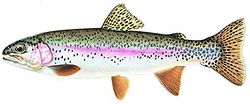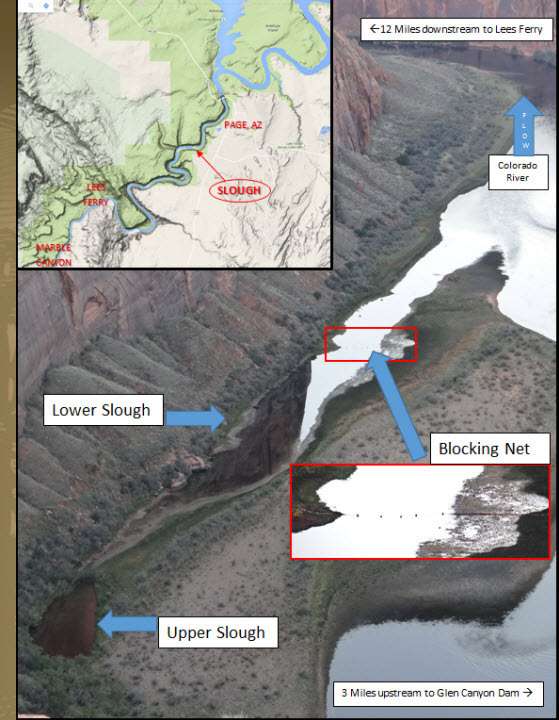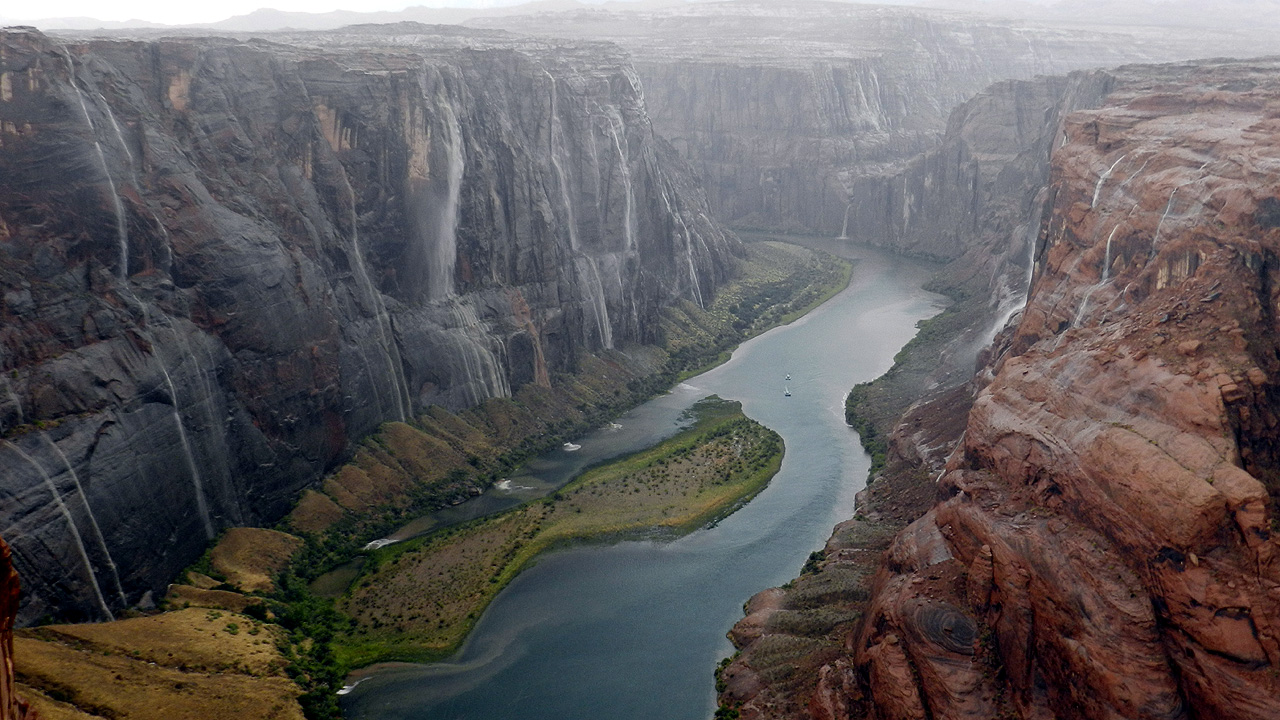Difference between revisions of "Green Sunfish Page"
Cellsworth (Talk | contribs) |
Cellsworth (Talk | contribs) |
||
| Line 35: | Line 35: | ||
[http://www.nwrc.usgs.gov/wdb/pub/hsi/hsi-015.pdf The temperature preference for adult green sunfish is 28.2° C and, when possible, they avoid temperatures above 31° C or below 26° C. Growth and food conversion efficiency increased as temperature increased from 13.2 to 28° C. Optimal temperatures for fry range from 18 to 26° C. The range of tolerance for bluegill fry is 10 to 36° C, and it is assumed that green sunfish fry tolerances are similar. Temperature requirements for juveniles are assumed to be the same as those for the adult life stage.] 2015-2016 temperatures in the mainstem ranged from 8.0-15.5 C between Lees Ferry and the Little Colorado River. 2015-2016 temperatures in the LCR ranged from 10.0-28.0 C. | [http://www.nwrc.usgs.gov/wdb/pub/hsi/hsi-015.pdf The temperature preference for adult green sunfish is 28.2° C and, when possible, they avoid temperatures above 31° C or below 26° C. Growth and food conversion efficiency increased as temperature increased from 13.2 to 28° C. Optimal temperatures for fry range from 18 to 26° C. The range of tolerance for bluegill fry is 10 to 36° C, and it is assumed that green sunfish fry tolerances are similar. Temperature requirements for juveniles are assumed to be the same as those for the adult life stage.] 2015-2016 temperatures in the mainstem ranged from 8.0-15.5 C between Lees Ferry and the Little Colorado River. 2015-2016 temperatures in the LCR ranged from 10.0-28.0 C. | ||
| − | '''Turbidity and Dissolved Oxygen:''' | + | '''[http://gcdamp.com/index.php?title=GCDAMP_Sediment Turbidity] and Dissolved Oxygen:''' |
| − | [http://www.dnr.state.mn.us/fish/sunfish/biology.html Green sunfish tolerate greater turbidity and lower dissolved oxygen than other sunfish.] [http://www.nwrc.usgs.gov/wdb/pub/hsi/hsi-015.pdf Moderate (25-100 JTU) turbidities | + | [http://www.dnr.state.mn.us/fish/sunfish/biology.html Green sunfish tolerate greater turbidity and lower dissolved oxygen than other sunfish.] [http://www.nwrc.usgs.gov/wdb/pub/hsi/hsi-015.pdf| Moderate (25-100 JTU) turbidities correlated with high species abundance are optimum.] [http://www.tandfonline.com/doi/abs/10.1577/1548-8659(1976)105%3C107%3AEOTOVR%3E2.0.CO%3B2 Ventilation rates were not affected by bentonite clay suspensions below 2,125 FTU (Formazin Turbidity Units) at 5 C, 1,012 FTU at 15 C, and 898 FTU at 25 C. At turbidity levels exceeding 1,012 FTU at 15 C and 898 FTU at 25 C ventilation rates increased 50-70%. Oxygen consumption rates were not affected by turbid suspensions of up to 3,500 FTU at any of the four temperatures.] |
| − | correlated with high species abundance are optimum.] [http://www.tandfonline.com/doi/abs/10.1577/1548-8659(1976)105%3C107%3AEOTOVR%3E2.0.CO%3B2 Ventilation rates were not affected by bentonite clay suspensions below 2,125 FTU (Formazin Turbidity Units) at 5 C, 1,012 FTU at 15 C, and 898 FTU at 25 C. At turbidity levels exceeding 1,012 FTU at 15 C and 898 FTU at 25 C ventilation rates increased 50-70%. Oxygen consumption rates were not affected by turbid suspensions of up to 3,500 FTU at any of the four temperatures.] | + | |
'''Salinity:''' | '''Salinity:''' | ||
Revision as of 15:53, 21 September 2016
 Rainbow Trout |
 Fish Species of the Colorado River in Lower Glen Canyon and Grand Canyon |
 Brown Trout |
|---|
|
|


